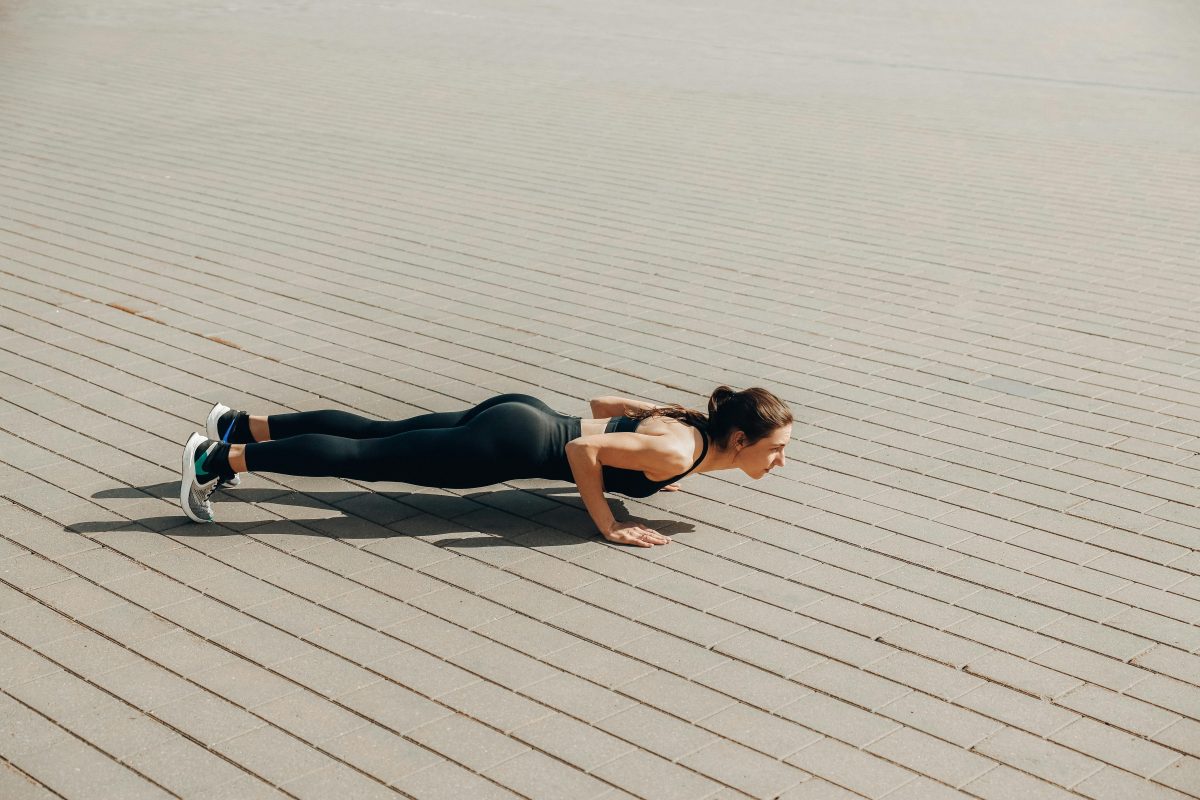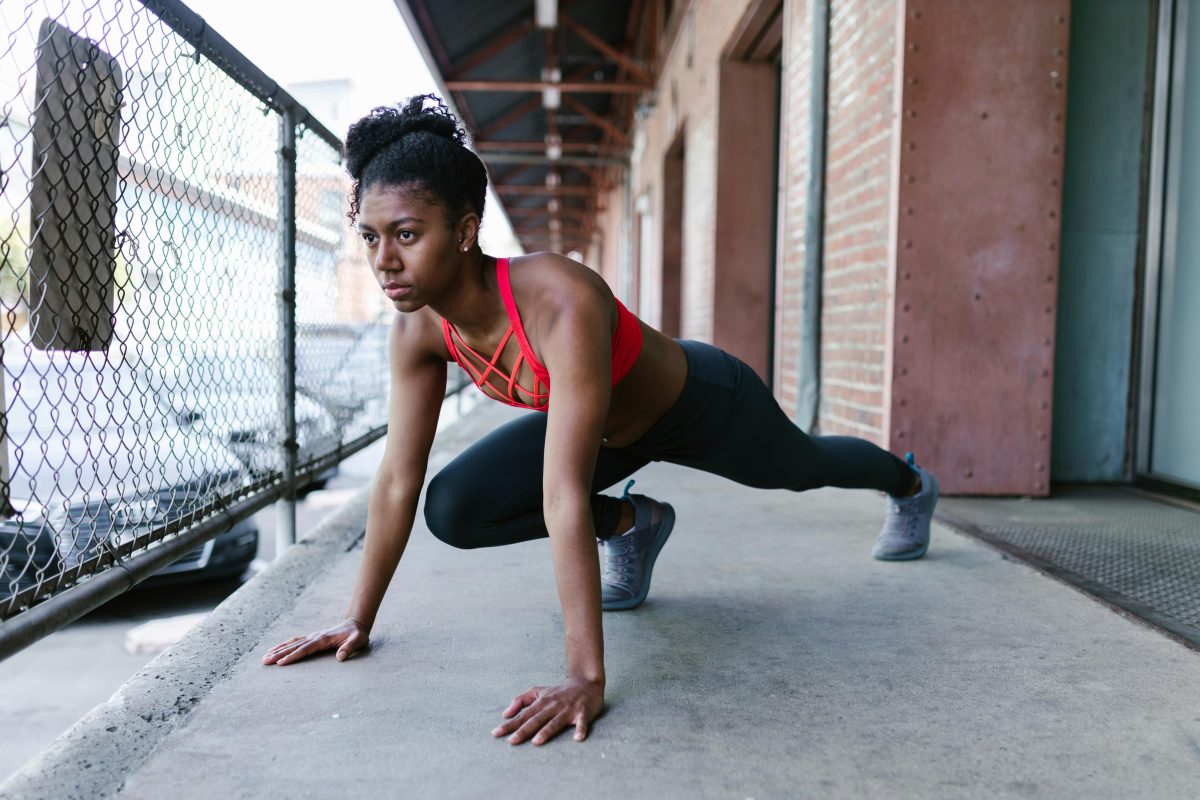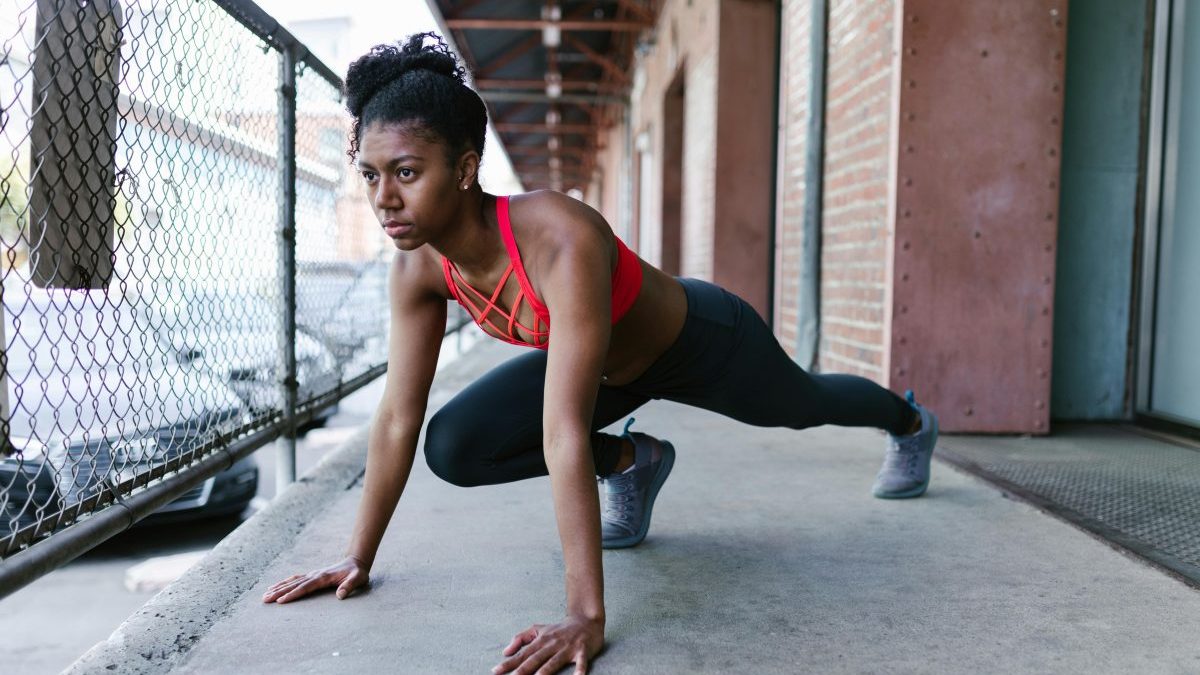Last Updated on: 14th July 2024, 08:54 am
Introduction to Bodyweight Exercises

Bodyweight exercises stand as a testament to fitness simplicity, harnessing one’s own body mass to challenge and build strength. This form of exercise, deeply rooted in history, has evolved from ancient warriors’ training routines to modern-day fitness trends. Unlike equipment-based exercises, bodyweight training offers unparalleled flexibility and accessibility, allowing practitioners to engage in a comprehensive workout anywhere, anytime.
- The evolution of bodyweight exercises reflects humanity’s quest for physical prowess, from the gymnasia of ancient Greece to the calisthenics movements of today.
- This journey underscores a return to basics, emphasizing natural movements over machine-based complexity.
- The comparison with equipment-based exercises reveals a stark contrast: bodyweight training promotes a holistic approach to fitness, enhancing agility, balance, and strength in a harmonious blend that equipment often cannot replicate.
Embracing bodyweight exercises means tapping into an age-old tradition that champions the human body as the ultimate fitness tool. This approach not only cultivates physical strength but also fosters a deep connection with the fundamentals of movement, making it a cornerstone in the realm of strength training.
The Science Behind Bodyweight Training

Understanding Muscle Hypertrophy and Strength Gains
At the heart of bodyweight training lies the principle of muscle hypertrophy. This process involves the increase of muscle mass through the repair of micro-tears that occur during exercise. Strength gains, similarly, are achieved as muscles adapt to the resistance provided by one’s own body weight. These adaptations lead to enhanced muscle endurance and power, pivotal for everyday activities and athletic performance alike.
The Role of Progressive Overload in Bodyweight Training
Progressive overload is crucial. It entails gradually increasing the difficulty of exercises to challenge the muscles continually. In bodyweight training, this can be achieved by altering leverage, increasing repetitions, or integrating more complex movements. This method ensures consistent muscle growth and strength development, underscoring the effectiveness of bodyweight exercises in a comprehensive fitness regimen.
Bodyweight Exercises and Functional Strength
Bodyweight exercises excel in building functional strength. This type of strength is vital for performing daily tasks and movements with ease. By mimicking natural movement patterns, bodyweight training enhances agility, balance, and coordination. These exercises strengthen the body as a cohesive unit, promoting a level of fitness that is both practical and adaptable to real-world scenarios.
Incorporating bodyweight exercises into a strength training program offers a path to achieving remarkable physical fitness. Through the science of muscle hypertrophy, the strategy of progressive overload, and the focus on functional strength, bodyweight training stands as a powerful tool in the quest for peak physical condition.
Advantages of Bodyweight Exercises

- Accessibility and Convenience: One of the most compelling benefits of bodyweight exercises is their sheer accessibility. No matter where you are, these exercises can be performed without the need for specialized equipment. This convenience ensures that your workout routine can stay consistent, whether you’re at home, in a hotel room, or enjoying the outdoors.
- Cost-effectiveness: Bodyweight training eliminates the financial barrier to entry that often comes with gym memberships or purchasing home exercise equipment. It’s a cost-effective way to achieve your fitness goals, making it an attractive option for individuals on a budget.
- Reduced Risk of Injury: Compared to weightlifting and other forms of high-intensity training, bodyweight exercises generally present a lower risk of injury. By using your own body weight as resistance, these exercises promote a natural range of motion and reduce the strain on your joints and muscles.
- Versatility and Adaptability for All Fitness Levels: Whether you’re a beginner or an experienced athlete, bodyweight exercises can be modified to match your fitness level. This versatility ensures that everyone can benefit from bodyweight training, making it an inclusive approach to strength and conditioning. From simple modifications to increase or decrease intensity, these exercises can be tailored to challenge your body and promote growth at any stage of your fitness journey.
Integrating bodyweight exercises into your strength training regimen offers a holistic approach to fitness. Their accessibility, cost-effectiveness, safety, and adaptability make them an indispensable part of achieving and maintaining peak physical condition. As you explore the vast array of bodyweight exercises available, you’ll discover a flexible, powerful tool for enhancing your strength, endurance, and overall health.
Core Bodyweight Exercises and Their Benefits

- Push-ups: With their myriad variations, target the upper body, fortifying the chest, shoulders, and triceps. This versatile exercise can be adapted to challenge even the most seasoned athletes, ensuring continuous growth and strength development.
- Squats and lunges: Reign supreme for lower body power. These fundamental movements engage the quadriceps, hamstrings, and glutes, promoting muscle growth and enhancing athletic performance. Their simplicity belies their effectiveness, offering a solid foundation for lower body strength.
- Planks and leg raises: For core stability, these exercises are unparalleled. They not only tighten the abdominal muscles but also fortify the lower back and hips, creating a robust core that supports a wide range of movements. The strength gained here is critical for both everyday activities and advanced athletic endeavors.
- Pull-ups and dips: Round out the regimen, offering comprehensive conditioning for the upper body. These exercises demand and develop a high level of strength, as they involve lifting and lowering one’s entire body weight. The result is a well-rounded upper body, capable of impressive feats of strength and endurance.
Together, these core bodyweight exercises form a powerful component of any strength training program. They offer a path to remarkable physical fitness, accessible to all, regardless of equipment or location. Their benefits extend beyond mere muscle growth, enhancing agility, balance, and functional strength. This holistic approach to fitness ensures that bodyweight training remains a timeless, effective method for building a strong, capable body.
Incorporating Bodyweight Exercises into a Strength Training Routine

Designing a balanced workout plan is essential for maximizing the benefits of bodyweight exercises within a strength training routine. By strategically combining bodyweight movements with weight training, individuals can achieve a comprehensive fitness regimen that enhances muscle growth, endurance, and overall physical health.
Progressive overload, a key principle in strength training, can be effectively applied to bodyweight exercises to continually challenge the muscles and promote growth. This can be achieved through various methods such as increasing the number of repetitions, modifying techniques to make exercises more challenging, and reducing rest times between sets. These adjustments ensure that the body does not plateau and continues to make gains in strength and endurance.
Combining bodyweight exercises with weight training offers a synergistic effect that can lead to optimal results. Bodyweight exercises improve flexibility, balance, and functional strength, which can enhance performance in weightlifting by allowing for a greater range of motion and improved muscle coordination. Conversely, weight training can increase the overall strength and muscle mass, providing a solid foundation that can make bodyweight exercises more effective.
By incorporating bodyweight exercises into a strength training routine, individuals can enjoy a versatile, effective, and adaptable workout plan. This approach not only fosters physical growth but also ensures a holistic development of strength, endurance, and overall fitness.
Overcoming Plateaus with Bodyweight Training

Strategies for Continuous Improvement
- Introducing new exercises or variations can reignite muscle development and strength gains. For example, transitioning from standard push-ups to archer push-ups targets muscles in a novel way, sparking growth.
Advanced Techniques: Isometrics, Plyometrics, and Unilateral Training
- Isometric holds, such as the plank, enhance muscular endurance and stability by maintaining a static position.
- Plyometrics, like jump squats, inject a burst of power into your routine, improving explosive strength.
- Unilateral training, focusing on one side of the body at a time, can correct imbalances and further intensify your workout.
Each technique offers a unique stimulus to muscles, ensuring continuous adaptation and improvement. By incorporating these advanced methods, you can push past plateaus and keep your body guessing, leading to consistent progress.
The Importance of Rest, Recovery, and Nutrition
- Rest days are critical for strength building, allowing muscles to repair and grow stronger.
- Recovery goes beyond rest; it includes practices like stretching, foam rolling, and even active recovery workouts to maintain mobility.
- Nutrition fuels your body’s ability to heal and build muscle. A balanced diet rich in protein, healthy fats, and complex carbohydrates supports the demands of an intense bodyweight training regimen. Hydration, too, plays a vital role in muscle function and recovery.
By prioritizing rest, recovery, and nutrition, you ensure that your body has the resources it needs to overcome plateaus and continue on the path of improvement. This holistic approach to bodyweight training is essential for long-term success and overall well-being.
In Closing
Bodyweight exercises unlock true physical potential. They blend ancient wisdom with modern science, offering a path to unparalleled strength and agility. Through the principles of muscle hypertrophy, progressive overload, and functional strength, this approach to fitness not only challenges the body but also enriches the spirit with resilience and adaptability. As we continue to explore and integrate these timeless exercises into our routines, we not only honor our heritage but also pave the way for a future of robust health and peak performance. Let this journey of strength be both a challenge and a joy, inviting us to push beyond our limits and discover our true capabilities.
Role of Bodyweight Exercises in Strength Training FAQs
Bodyweight exercises are highly suitable for beginners in strength training as they teach fundamental movement patterns and body awareness. They require no equipment, making them accessible and scalable according to individual fitness levels. Starting with basic exercises helps in building a solid foundation of strength and stability.
Yes, bodyweight exercises can effectively increase strength by utilizing one’s own weight to provide resistance against gravity. These exercises can be progressively made more challenging by adjusting angles, adding movement complexity, or increasing volume and intensity. This adaptability helps in continuously challenging the muscles, leading to strength gains.
Yes, you can build muscle mass with bodyweight exercises through progressive overload, similar to traditional weight training. By progressively increasing the difficulty of exercises and ensuring proper nutrition, your muscles can grow in size and strength. Techniques such as increasing reps, reducing rest times, and performing more challenging variations can help in muscle hypertrophy.
Progressing in bodyweight exercises to continue gaining strength involves increasing the exercise difficulty, volume, or intensity. Techniques such as adding more repetitions, reducing rest periods, or performing advanced variations can provide the necessary stimulus for continued strength development. Implementing progressive overload is key to advancing in any strength training program.
Bodyweight exercises offer a unique advantage in strength training by improving relative strength and body control. While weightlifting focuses on absolute strength by lifting external weights, bodyweight training enhances functional strength and mobility, which is crucial for daily activities and athletic performance.
For optimal strength gains, one should perform bodyweight exercises 2 to 3 times per week, allowing for adequate rest and recovery between sessions. This frequency ensures progressive muscle overload while preventing overtraining and injury. Adjusting the intensity and volume of workouts can cater to individual recovery rates and fitness goals.
Supplementing bodyweight exercises with weights is not necessary for strength training but can be beneficial for targeting specific strength goals and overcoming plateaus. Adding weights can increase the resistance and challenge, promoting further strength and muscle development. However, significant strength gains can still be achieved through advanced bodyweight training techniques alone.
Push-ups, pull-ups, and dips are effective bodyweight exercises for building upper body strength. These exercises target the chest, back, shoulders, and arms, engaging multiple muscle groups for comprehensive upper body development. Variations of these exercises can be introduced to target muscles from different angles and increase the challenge.
Incorporating bodyweight exercises into a strength training routine enhances flexibility, balance, and coordination while building strength. These exercises engage multiple muscle groups simultaneously, promoting muscle coordination and functional strength. Additionally, they can be performed anywhere, making them a versatile addition to any fitness regimen.
Nutrition and recovery play a crucial role in gaining strength with bodyweight exercises, as they support muscle repair and growth. Adequate protein intake is essential for muscle recovery, while carbohydrates and fats provide the energy needed for workouts and daily activities. Proper rest, including quality sleep and rest days, allows the body to recover and adapt, making nutrition and recovery foundational to any strength training program.
Orlando is a all round athlete from Australia, now resident in Germany. His sports of passion of American Football(Offensive line), weight training and indoor rock climbing where he uses his 195cm wing span to his advantage.



